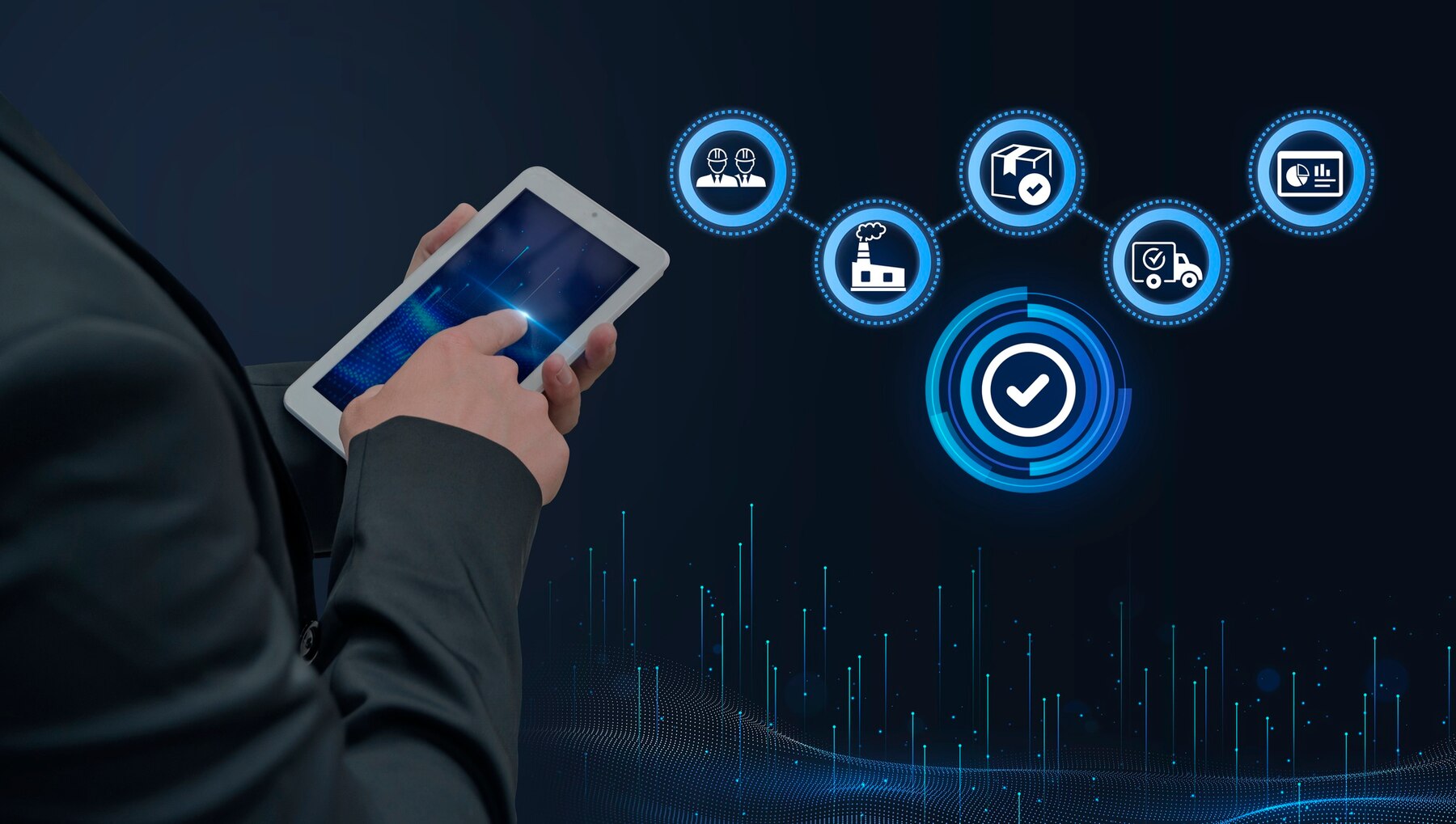In today’s fast-paced, technology-driven world, the need for efficient, seamless communication between systems is more crucial than ever. This is where the concept of “Agent Interface” comes into play. It acts as a bridge between software agents, making interaction and automation smooth and effective. Whether it’s managing complex tasks or providing feedback from a system, an Agent Interface simplifies and enhances the way we interact with technology.
What is an Agent Interface?
At its core, an Agent Interface is a software component that facilitates interaction between different systems or software agents. It acts as a middleman, directing commands and providing essential sensory feedback to the user or other systems. Imagine trying to control a robot or an AI system—without an interface, the communication would be chaotic. The Agent Interface ensures smooth, transactional communication between systems, creating a more organized flow of data and actions.
In automation-driven environments, where tasks are often carried out by machines with minimal human interaction, Agent Interfaces play a pivotal role. They ensure that commands are executed, feedback is provided, and everything runs as expected.
The Core Functions of Agent Interfaces
Seamless Command Control
One of the primary functions of an Agent Interface is to direct command controls. In many systems, especially those powered by AI or automation, different agents work together to accomplish a task. These agents need clear instructions on what to do next, which is precisely what the Agent Interface provides. Whether it’s a voice command, a click, or a programmed action, the interface ensures the agent follows the correct sequence of operations.
Sensory Feedback
Alongside executing commands, Agent Interfaces are also responsible for providing sensory feedback to users. This feedback could be in the form of visual alerts, sounds, or even haptic responses. The sensory feedback ensures the user knows that the command has been received and the process is progressing as expected. In more advanced systems, sensory feedback can also inform users of issues or errors, allowing them to correct them in real time.
Enhancing Communication Between Systems
In a world where different software applications and systems often need to communicate with each other, Agent Interfaces become indispensable. They enable transactional communication between different agents, systems, or even between humans and machines. By streamlining how data is passed from one entity to another, the interface plays a significant role in creating more effective and efficient systems.
Types of Agent Interfaces
Human-Agent Interface
A Human-Agent Interface is the point of interaction between humans and automated systems. Think of it as the digital “face” of a machine. Examples of this include voice assistants like Siri, Alexa, and Google Assistant. These interfaces allow users to issue commands and receive feedback, making the interaction intuitive and user-friendly.
Machine-Agent Interface
The Machine-Agent Interface allows different machines or systems to communicate with each other. In industrial automation, for example, machines need to work together to perform tasks such as assembling products or sorting inventory. The interface facilitates this communication, ensuring each machine understands its role and can share data effectively.
Software-Agent Interface
Software applications often need to work together to accomplish tasks. A Software-Agent Interface connects different software programs, allowing them to exchange data and perform operations as needed. This can be crucial in environments like cloud computing, where different services need to coordinate to provide a seamless experience.
Key Benefits of Agent Interfaces
Simplifying Complex Systems
Agent Interfaces simplify complex systems by providing a clear path for communication and interaction. Instead of manually intervening in a machine’s operations, users can rely on the interface to carry out actions, handle tasks, and even correct errors without human involvement. This not only reduces the risk of mistakes but also saves valuable time.
Boosting Automation Efficiency
In automation-heavy environments, the role of the Agent Interface is vital in ensuring the system works efficiently. By allowing agents to automatically communicate with each other and execute pre-defined tasks, these interfaces enhance overall efficiency and reduce the workload on human operators.
Real-Time Feedback and Monitoring
Real-time feedback provided by an Agent Interface ensures that users are always in the loop. Whether it’s for troubleshooting, adjusting settings, or monitoring the progress of a task, the interface delivers continuous updates. This makes it easier to monitor automated processes and take corrective actions when necessary.
Enhancing User Experience
The primary goal of any interface is to improve the user experience. By simplifying communication and reducing the complexity of interacting with machines or other systems, Agent Interfaces help make these interactions more user-friendly. This is particularly important in applications that require a high level of user engagement or need to cater to a wide audience.
The Role of AI in Agent Interfaces
Artificial intelligence (AI) plays a transformative role in enhancing Agent Interfaces. With AI integration, these interfaces can become more responsive, intuitive, and adaptive. For instance, AI-powered systems can predict user actions and provide personalized responses, making the interaction feel more natural and engaging.
Voice Assistants and AI-Powered Interfaces
Voice assistants are a prime example of how AI is revolutionizing Agent Interfaces. These systems use natural language processing (NLP) to understand and respond to spoken commands. The more they are used, the better they understand user preferences and can even offer proactive suggestions or assistance.
Intelligent Automation
AI-powered Agent Interfaces also enable intelligent automation. In sectors like manufacturing, logistics, and customer service, AI agents can make decisions and carry out tasks without human intervention, all while continuously learning from interactions. This not only boosts efficiency but also helps to achieve better outcomes over time.
Future Trends in Agent Interfaces
The future of Agent Interfaces looks incredibly exciting, especially with the continuous advancements in AI, machine learning, and automation technologies. Here are a few trends to watch for:
Increased Personalization
As AI systems become more sophisticated, personalization will be a key feature of future Agent Interfaces. These systems will learn more about individual users and adapt to their preferences, offering tailored responses and actions. Whether it’s a smart home system or an AI-powered chatbot, the ability to cater to individual needs will enhance user experience even further.
Cross-Platform Integration
With the rise of the Internet of Things (IoT) and connected devices, we can expect cross-platform integration to become a significant trend. Agent Interfaces will work across various platforms and devices, creating a seamless experience for users. For instance, users could issue a voice command from their phone, and the system would interact with smart appliances, cars, and more, all through a single interface.
More Advanced Feedback Systems
The future of feedback in Agent Interfaces will likely go beyond simple visual or audio cues. We might see more immersive feedback systems such as haptic feedback or even augmented reality (AR) interfaces that provide a more tactile and interactive experience.
Conclusion
Agent Interfaces are essential components in the automation-driven world of today. By simplifying communication and improving interactions between humans and machines or even between machines themselves, these interfaces play a critical role in ensuring efficiency, accuracy, and user satisfaction. As technology continues to evolve, so too will Agent Interfaces, making interactions even more intuitive, intelligent, and seamless.
FAQs
What is an Agent Interface?
An Agent Interface is a software system that enables interaction and communication between different systems or software agents.
How does an Agent Interface enhance automation?
It streamlines the communication and control between systems, reducing the need for manual input and enhancing overall efficiency.
Can AI improve Agent Interfaces?
Yes, AI can make Agent Interfaces more intuitive, responsive, and adaptive, offering better personalization and decision-making capabilities.
What are the types of Agent Interface’s?
The main types include Human-Agent, Machine-Agent, and Software-Agent Interfaces, each serving different communication needs.
How do Agent Interfaces provide feedback?
They provide sensory feedback through visual alerts, sounds, or even haptic responses, letting users know that commands have been received or actions are being executed.
What is the future of Agent Interface’s?
The future involves more personalization, cross-platform integration, and advanced feedback systems such as augmented reality and haptic interfaces.











